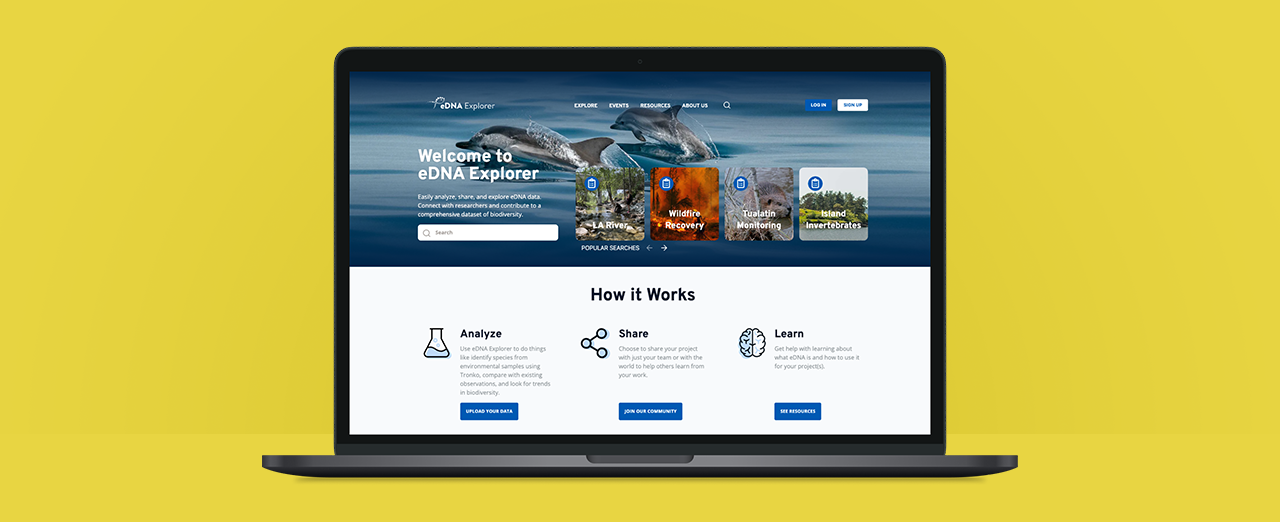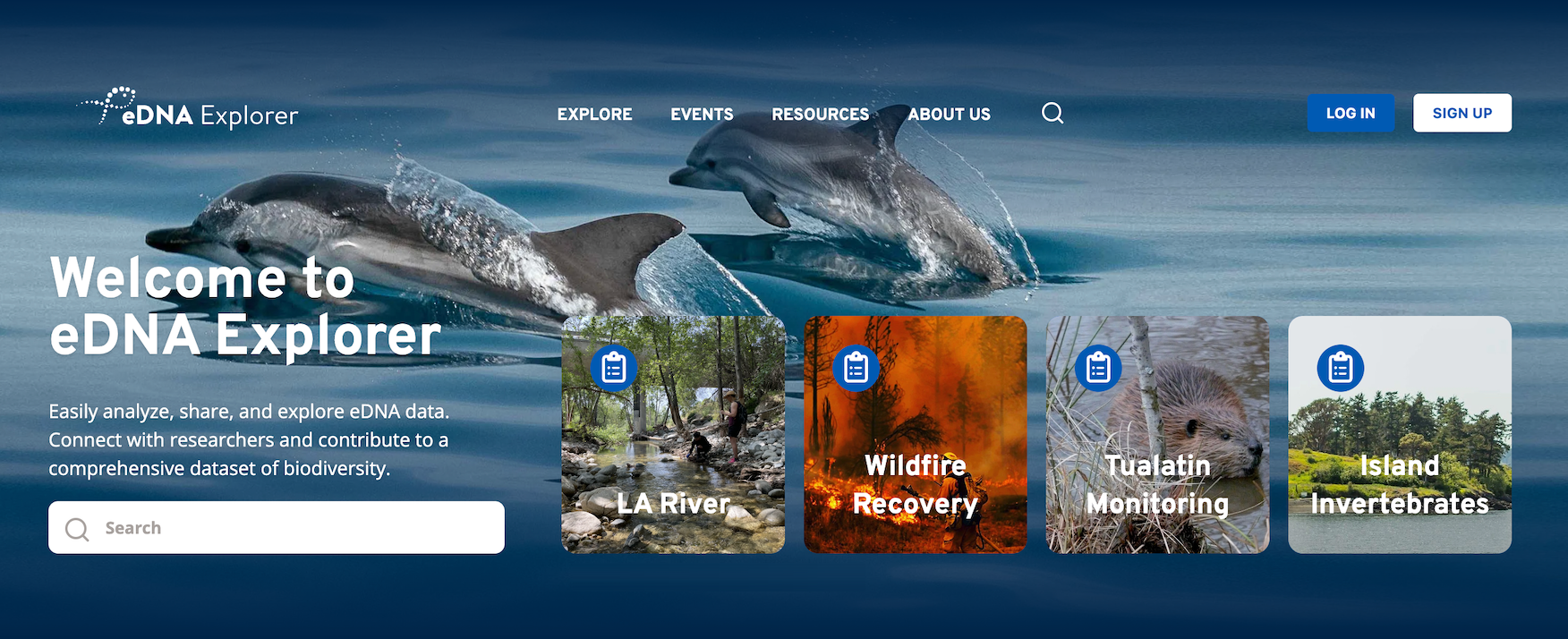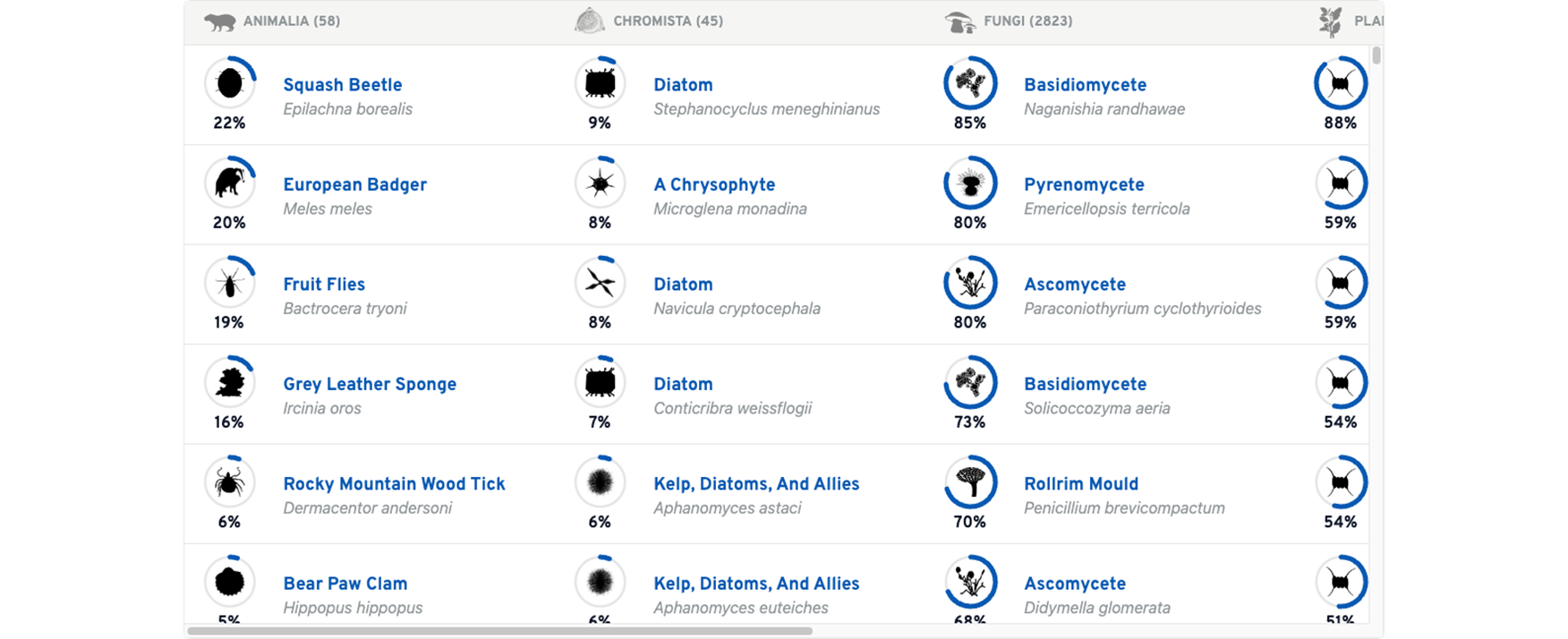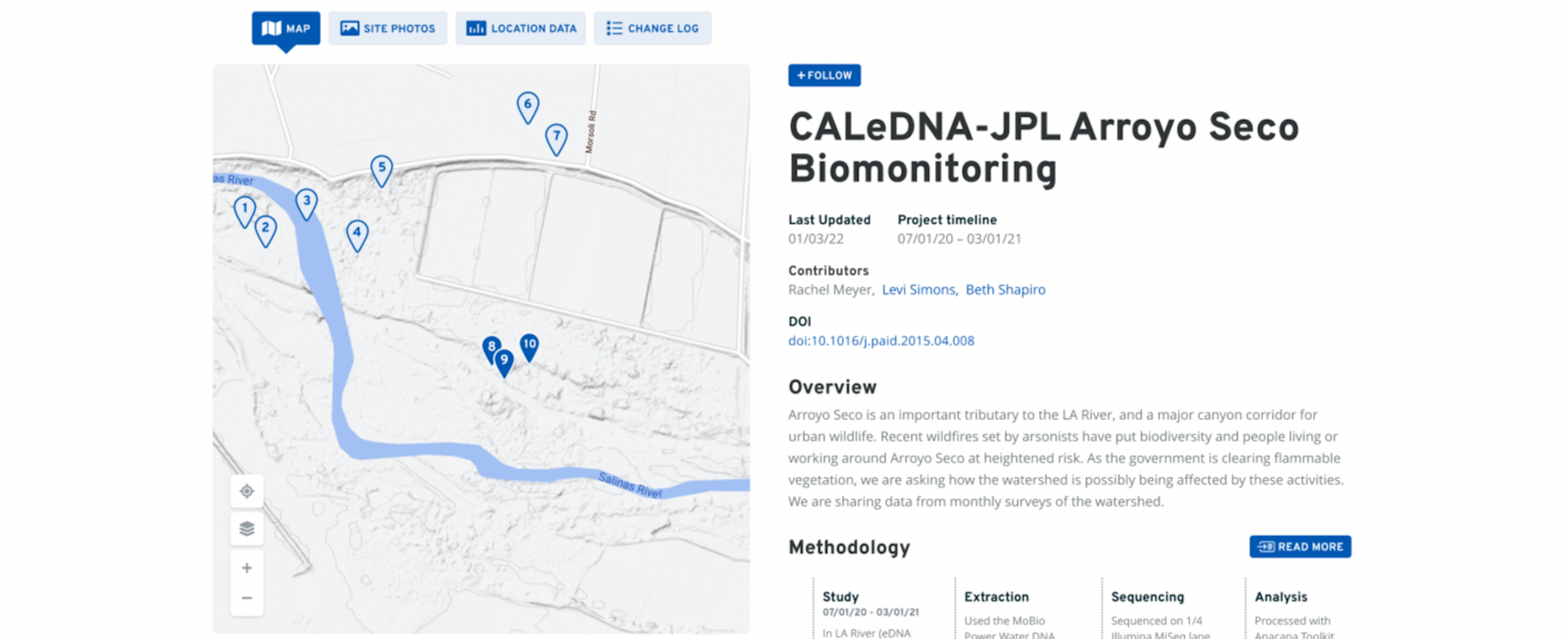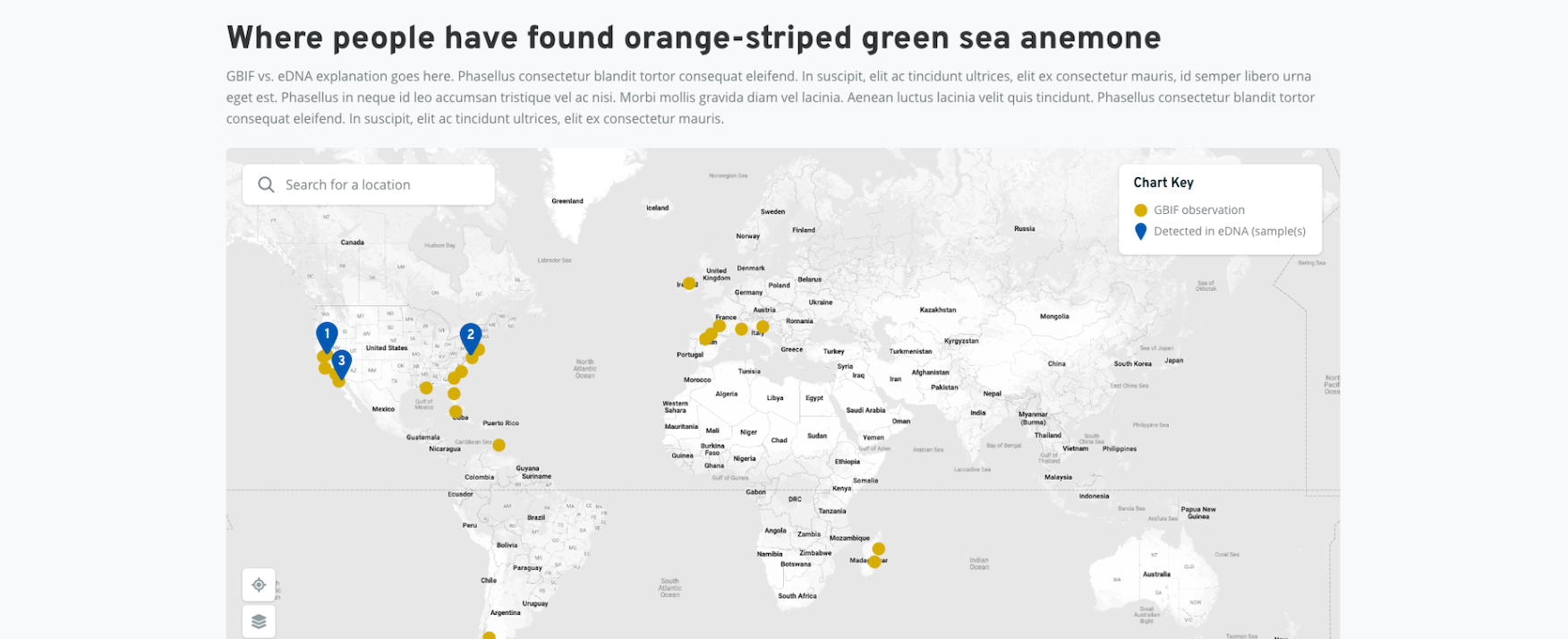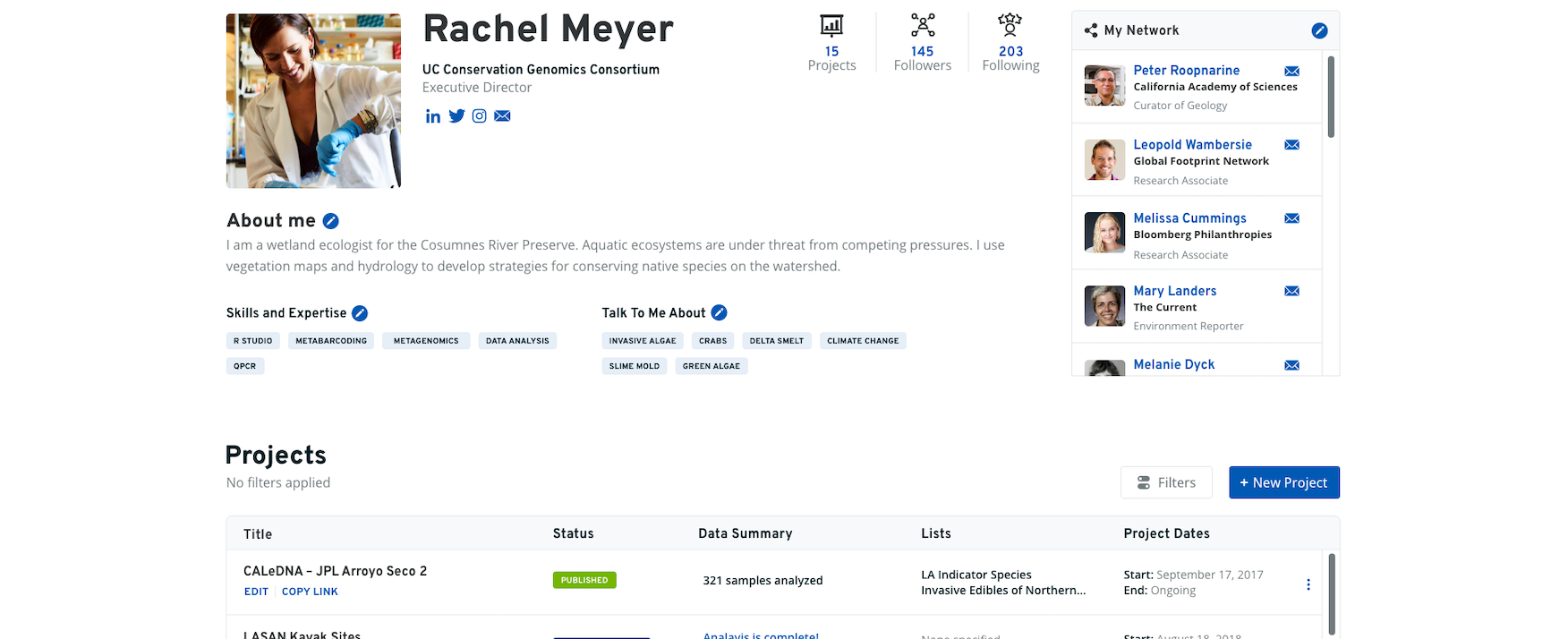eDNA
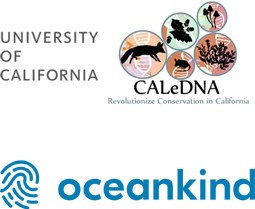
Breaking down barriers to eDNA adoption
With Environmental DNA (eDNA), scientists can analyze DNA from just a scoop of water or soil, revealing a who’s who of organisms in that environment. eDNA can revolutionize biodiversity studies, tackle invasive species, protect endangered creatures, and even help find COVID in wastewater. The dynamic duo of CALeDNA and Oceankind joined forces with Sliced Bread to uncover barriers to the use of eDNA as a field research method.
Our goal was to identify and remove barriers to unleash this superhero technology from the confines of the lab.
Case Study
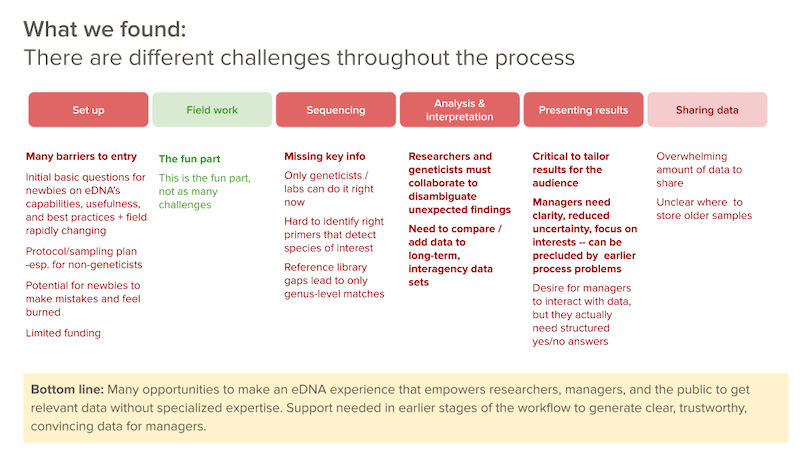
Are all the eDNA people hanging out without us?
As we chatted up the scientific community, it quickly became clear that using eDNA is no simple feat. Potential eDNA users in a range of disciplines mentioned the same barriers:
- Uncertainty about the capabilities and limitations of eDNA. Upside: it’s an unwritten story that you can help write! Downside: there isn’t an established community with standards and practices…yet!
- Plan? What plan?: Crafting a solid study plan with even basics like, “who, what, when, where, and why?” feels like starting in a void.
- What does this really mean?: Understanding the results without a geneticist is like finding a map in a secret language.
But here’s the exciting part: we discovered that everyone we interviewed had an impressive network of collaborators, including a few geneticist pals who wanted to help out. This prompted the real question: how might we leverage these connections to overcome barriers and promote widespread eDNA adoption?
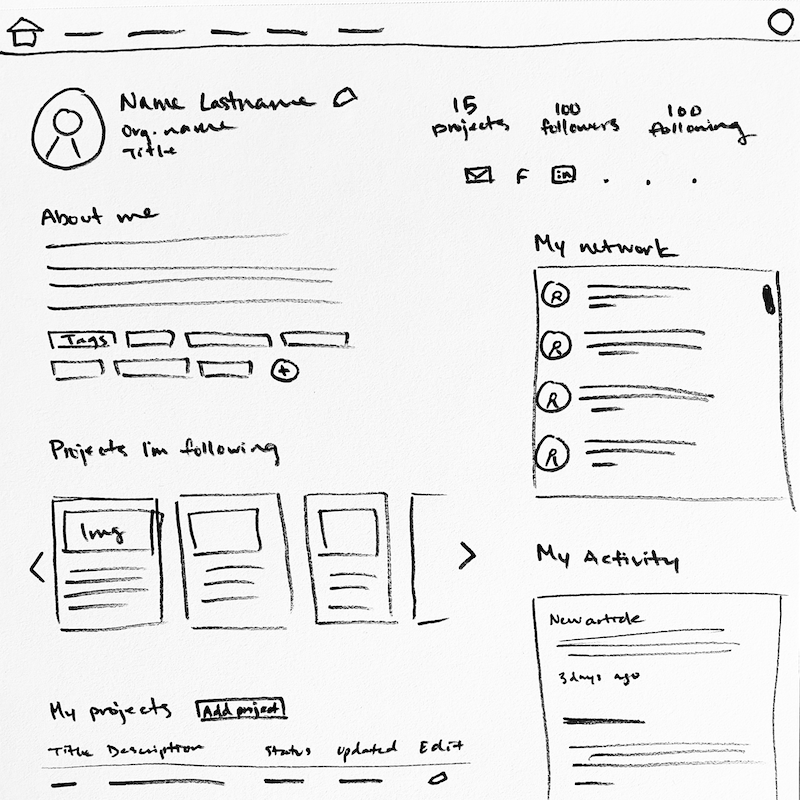
Many hands make light work.
Drawing inspiration from our insights, we envisioned a new online tool called eDNA Explorer. On this platform, scientists, researchers, and managers would come together, share their work, take a look at others' eDNA projects, and even get their own data analyzed—all without relying on the generosity of a geneticist-friend. Thanks to some new tech from UC Berkeley, the power would be in any researcher’s hands.
We sketched out concepts for displaying data and mapped out every step of submitting a project. After working with CALeDNA to pick the most compelling design direction, we transformed our sketches into sleek Figma prototypes.
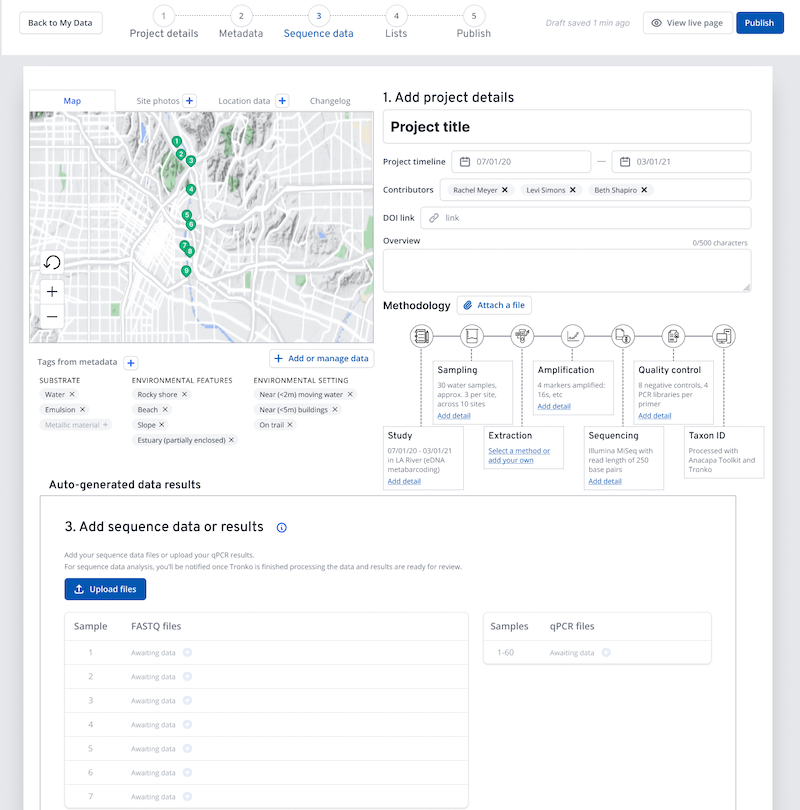
What do the experts think?
We put our designs to the test, iterating and refining with the help of multiple scientists and researchers. Their excitement was contagious! They loved the idea of using the site to find information about eDNA, discover potential collaborators, and dive headfirst into projects. They couldn't wait to explore automatically generated maps and charts that made sense of data and allowed them to compare their work visually and effortlessly.
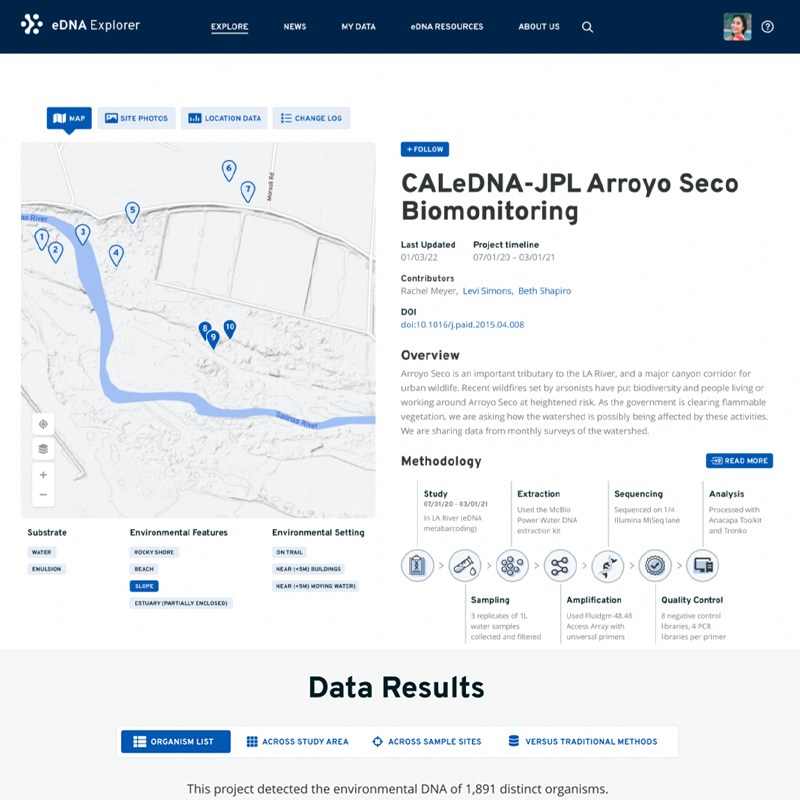
Breathing life into eDNA Explorer.
With the prototypes in tip-top shape, our visual designers worked their magic, crafting a beautiful logo and branding for the website. Meanwhile, our front-end engineers set to work on implementation, making sure everything was pixel-perfect.
To launch this cutting-edge technology showcase, we delved into database and cloud storage options, developed APIs for the backend, and seamlessly stitched together data from various trusted academic sources. We collaborated closely with the scientists and backend engineers, to ensure accurate data collection and display.
The Results
The pilot phase of field research is underway, featuring projects submitted by invitation and with data from the LA River and beyond. We're already cooking up plans for a the next phase, including exciting industry funding announcements and a global expansion strategy. Oceankind is on top of the world with their investment, and we're ready to turn this site into the de facto place for analysis and sharing of eDNA data!
Visit the eDNA Explorer site to dive in to a scientific adventure for yourself.
